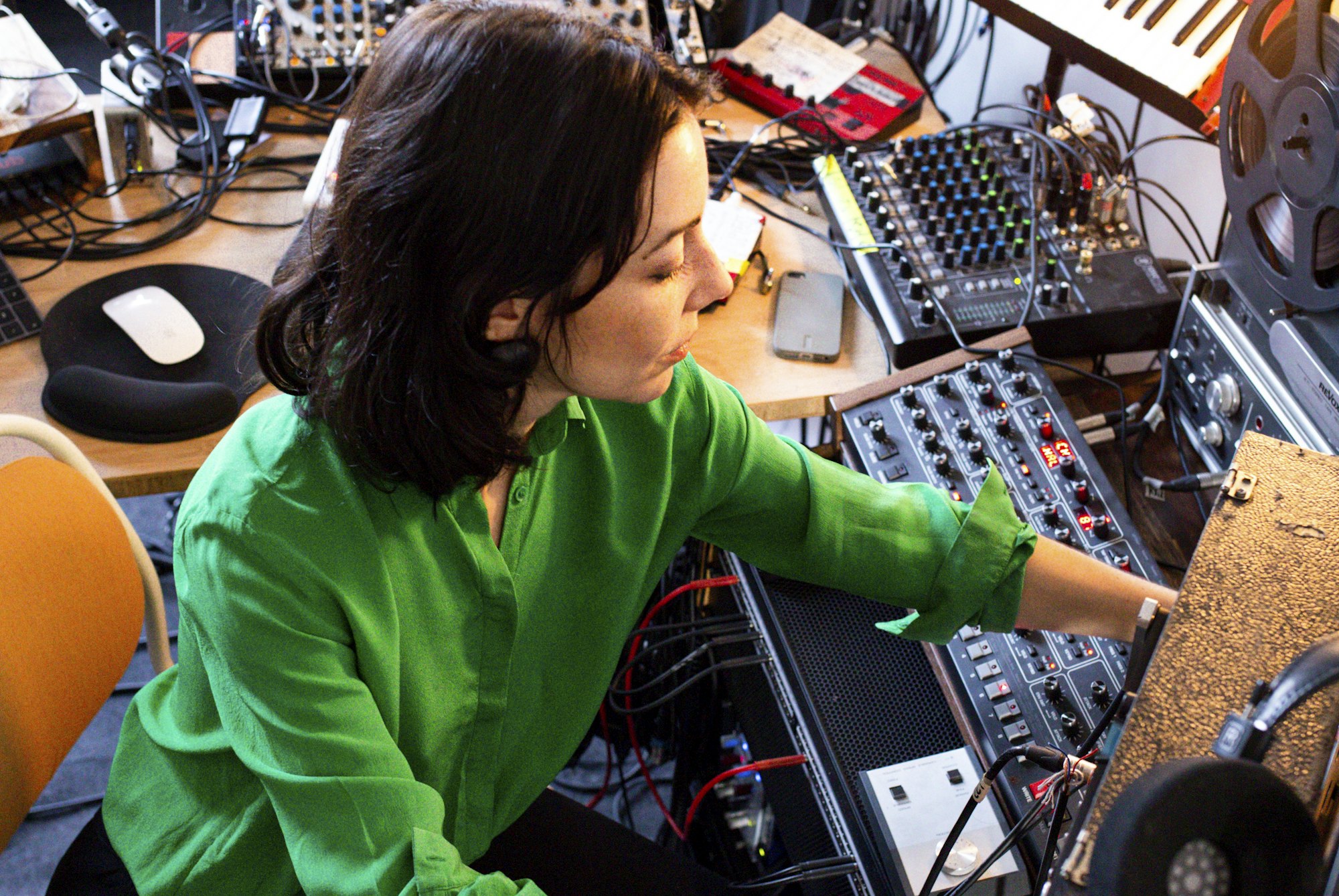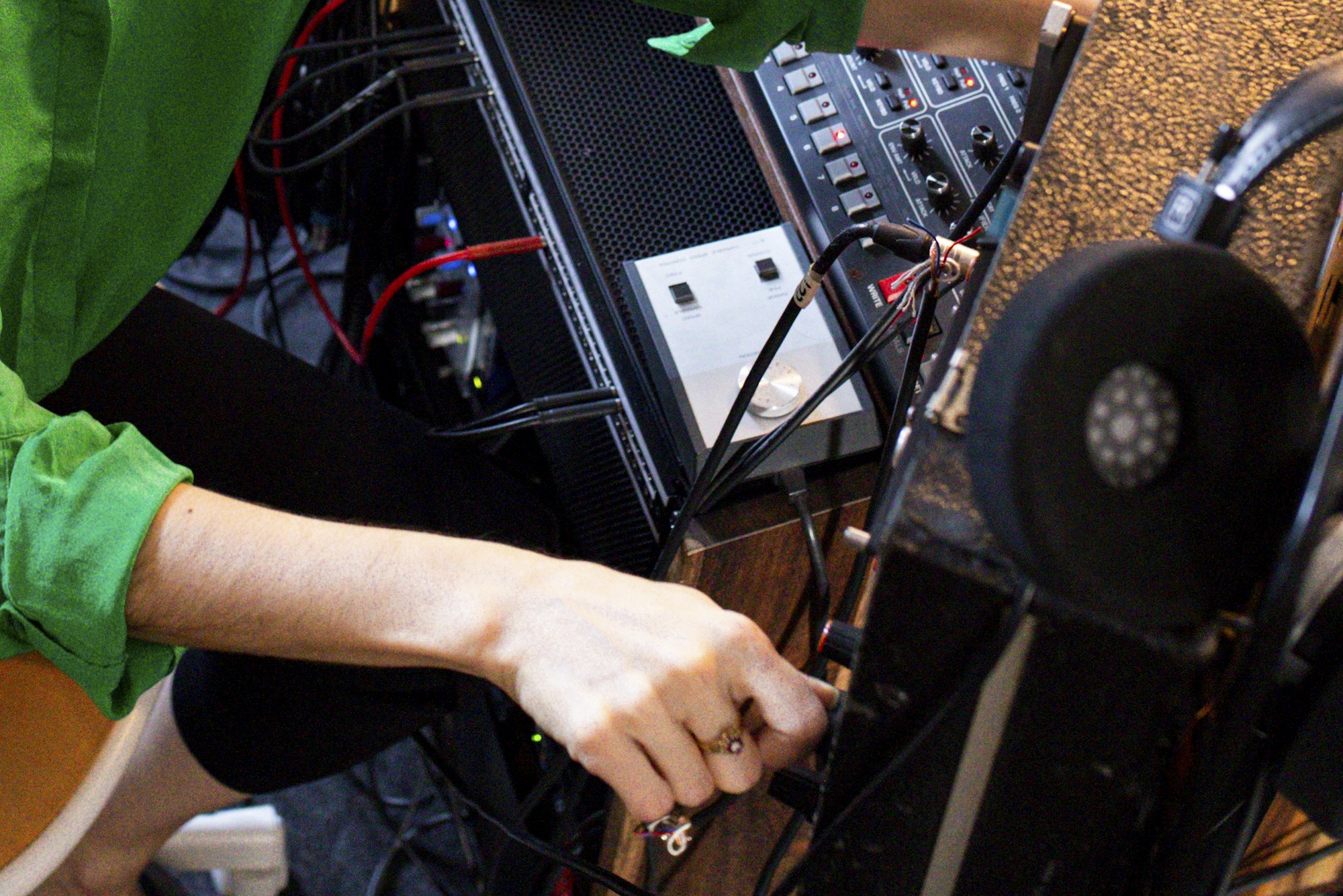Words by Emma Warren
A score by sound artist Lucrecia Dalt isn’t going to hide around the images. “I do feel that in contemporary cinema, it is very common to find a type of scoring that is more emotionally driven,” says the Colombian-born Berlin resident. “You are kind of washed and you're not supposed to remember what you hear. It's such a lost opportunity to contrast to create an extra layer of meaning within the film – but I know it's an aesthetic choice and not everybody likes that.”
Dalt has just finished scoring horror-comedy show The Baby for HBO – Mashable made positive note of the ways her ‘disconcerting’ soundscape built tension – and has just released her debut score for Sam Walker’s 2021 ‘bodily horror’ movie The Seed on Invada Records. There’s no ‘lost opportunity’ regarding either of these. “When I find directors who want to have the score present and loud, who want audiences to feel with the score and remember it – that is pure joy for me because it's like, ‘OK, now I can offer something.’”
The creators of The Baby wanted something memorable, and for Dalt, this meant using ‘bodily sounds, vocal sounds, weird voices and stuff’. She was already using glossolalia on her 2020 RVNG release No era sólida – and when the pandemic hit she decided to see what else she could do with her voice. It was research that came in handy once she’d finished the score for The Seed and started work on The Baby. “Most of the references that the creators sent me were already in this document where I was compiling stuff about what the voice can do. So I was really excited to bring a little bit of that knowledge and the music that I was finding, and all that as inspiration to work on the show.”
Using her own voice forced her to rethink what was possible. “I was curious to know if I could isolate this part of my body, especially the connection to brain and voice, to see how I could deprogram myself into doing whatever I was naturally drawn to. Whatever comes natural, I was fighting against, completely.” She also recorded other vocalists, including her creative partner and drummer Alex Lázaro, experimental vocalist Audrey Chen and Canadian throat singer Cynthia Pitsiulak. Recording the Hamburg-based throat singer was an experience. “It is so intense and brutal, and it was so fantastic to see that and to record it as well and see how the microphones react,” says Dalt. She chose ribbon mics to capture the sound: “It was fantastic. All this earthiness was coming through.” A score release will follow.

Dalt has a professional background as a geotechnical engineer. At the start of her career, back when she was still performing bass and singing, they developed some bespoke MIDI controllers together. It was, she says, ‘a very beautiful exercise’. “At the time, I was not satisfied with any product that was in the market for MIDI controlling with your feet. Everything was too big, too heavy, too bulky, too everything. I just wanted a very simple layout with buttons, that's all.”
When I find directors who want to have the score present and loud, who want audiences to feel with the score and remember it – that is pure joy for me.
Synthesisers have been in the foreground of much of Dalt’s previous work, whether that’s her acclaimed seven albums including Anticlines or her work with tape loop composer Aaron Dilloway under the name Lucy & Aaron. She’s also well-known as a sound artist, having created work for Haus der Kulturen der Welt in Berlin, the Museum of Modern Art in Medellín, and at Pioneer Works in New York.
Just before the pandemic, she collaborated with artist Maria Thereza Alves on spatial sound installation ‘You Will Go Away One Day But I Will Not’ at Berlin’s Botanical Gardens, as part of the annual CTM Festival. “The first thing we noticed was that some of the names of the plants were related to the name of the person who ‘discovered’ it. We started to feel that this was totally bizarre, especially in the colonial context. Alves was already working with the Guarani community in Mato Grosso do Sul, Brazil, and recorded songs and sacred chants relating to 26 of the plants in the Botanical Garden’s collection. Dalt’s contribution involved compositions experienced through motion-sensitive headphones, with songs relating to each plant coming into hearing range as the listener moved closer to it – ensuring that each listener heard the installation in a unique way.
“I couldn't help but think about an experience with Ayahuasca,” she said. “When you were wearing the headphones, you were allowed to feel all these connections and concatenations that happen within all these plants… I thought that a beautiful way to perceive change is through pauses and rhythms so that you're moving and then you are perceiving that it's all corresponding rhythmically.”

The year before she’d been invited by Sónar Festival to perform at the Mies van der Rohe Pavillion in Barcelona. “I wanted to place speakers underneath the tiles, and to use the impulse response of the wall, and do a piece in which I was moving, walking. I had a microphone in my shoe. It was all around the idea of that tension between inside and outside and edges, which I was already exploring in my previous album before.”
Next, she’s finishing some new music and rethinking her live show. “The new music is very different than anything I've done up to now, with a lot of percussion, vocals, melody progressions and whatnot. It’s less abstract, definitely.”
Part of this rethinking relates to movement, and not just ensuring that the gestures she uses to trigger her kit are effective. “I wanted to dance again,” she says. “I'm from Colombia, my country is really crazy about dance. It’s so embedded in the culture. I was sort of in denial from my more tropical self. I'm thinking about that as well, like, ‘how am I gonna perform now, when I've been performing on a chair in the past five years?’ All I want to do is move my body again.”
